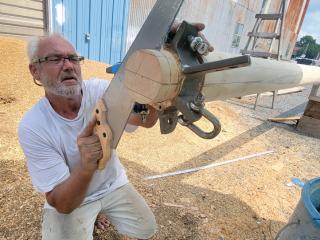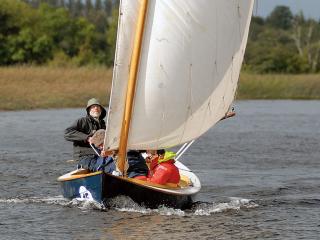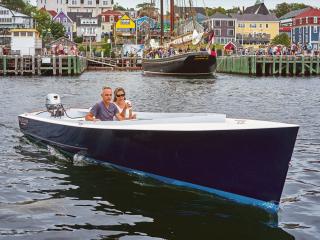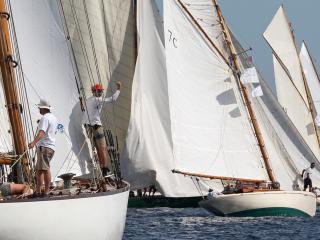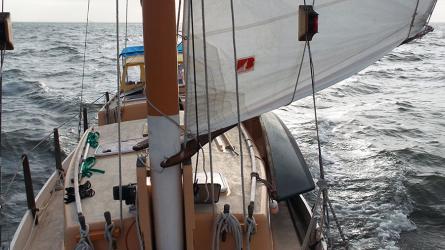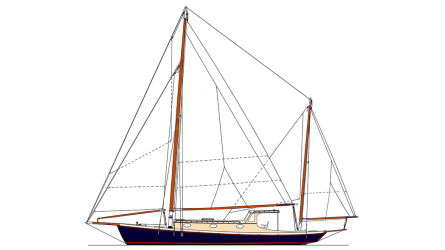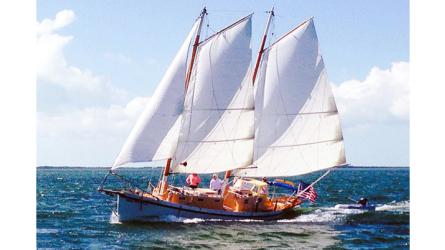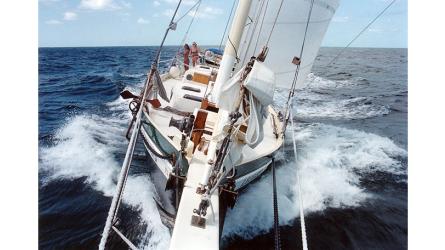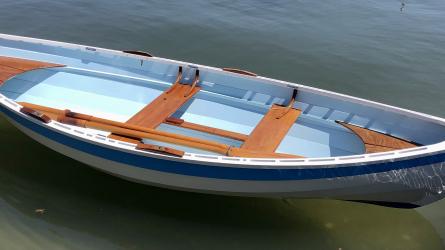May / June 2024
On the Lunatic Fringe
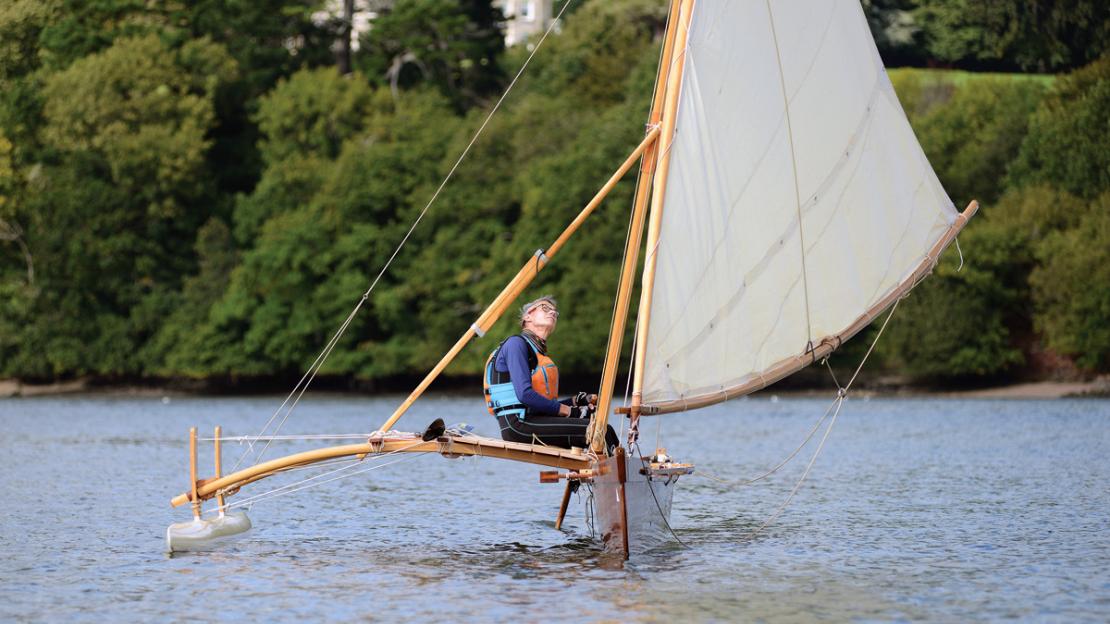
Gary Dierking’s T2 Pacific-proa design has a main hull, or vaka, that has a beam of just 1'4". The outrigger, or ama, always remains on the windward side regardless of sailing direction.
It’s not every day you get invited to go sailing by the commodore of your local sailing club, so I was quite excited when the call came one sunny morning in September. The Stoke Gabriel Boating Association overlooks the River Dart in Devon, in southwestern England, so you might reasonably assume that its commodore would own a good, solid local boat like a Westcountry lugger, a Devon Yawl, or perhaps one of the Cornish Shrimpers so ubiquitous in these parts.
But that wasn’t what greeted me on the water that autumn day. Instead, what I saw was a moth-like craft with a low, brown body, an angular leg sticking out to one side, and a great cream-colored wing pointing jauntily up at the sky. It looked like a steampunk vision of a boat, both old-fashioned and yet strangely modern. However, once we got underway there was nothing imaginary about the way she took off and flew over the water when a gust came funneling down the river.
The boat was in fact a proa, a type of outrigger canoe whose antecedents came from the other side of the world, in the South Pacific. She had been interpreted and reimagined for modern construction by an American designer living in New Zealand and built by an English former expatriate newly returned to the United Kingdom from South Africa. And yet, despite its exotic provenance, the insect-like little boat didn’t look out of place among the rolling green hills of Devon. A beautiful boat is a beautiful boat wherever she’s sailing.
Proas have a unique place in yachting history. They’ve been both revered and ridiculed, yet not well understood. There’s something about their lack of athwartships symmetry that challenges European understanding of what a boat is. We expect boats to have a front and back and be the same shape side to side—even people who don’t understand terms such as “bow,” “stern,” and “hydrodynamic flow” know that much. But a “shunting” proa has none of these things. It has a single outrigger, the main hull, called the vaka, is curved on one side and flat on the other side, and it can sail in either direction without ever changing tack. That means the “bow” and the “stern” swap roles with every “shunt” leaving the outrigger, or ama, always on the same side. Confused? Read on.
To read the rest of this article:
Click the button below to log into your Digital Issue Access account.
No digital access? Subscribe or upgrade to a WoodenBoat Digital Subscription and finish reading this article as well as every article we have published for the past 50-years.
ACCESS TO EXPERIENCE
2-for-1 Print & Digital Subscription Offer
For this holiday season, WoodenBoat is offering our best buy one, get one deal ever. Subscribe with a print & digital subscription for $42.95, and we’ll give you a FREE GIFT SUBSCRIPTION to share with someone special.
1 YEAR SUBSCRIPTION (6 ISSUES)
PLUS ACCESS TO MORE THAN 300 DIGITAL BACK ISSUES
PRINT+DIGITAL $42.95
Subscribe
To read articles from previous issues, you can purchase the issue at The WoodenBoat Store link below.
 Purchase this issue from
Purchase this issue from
